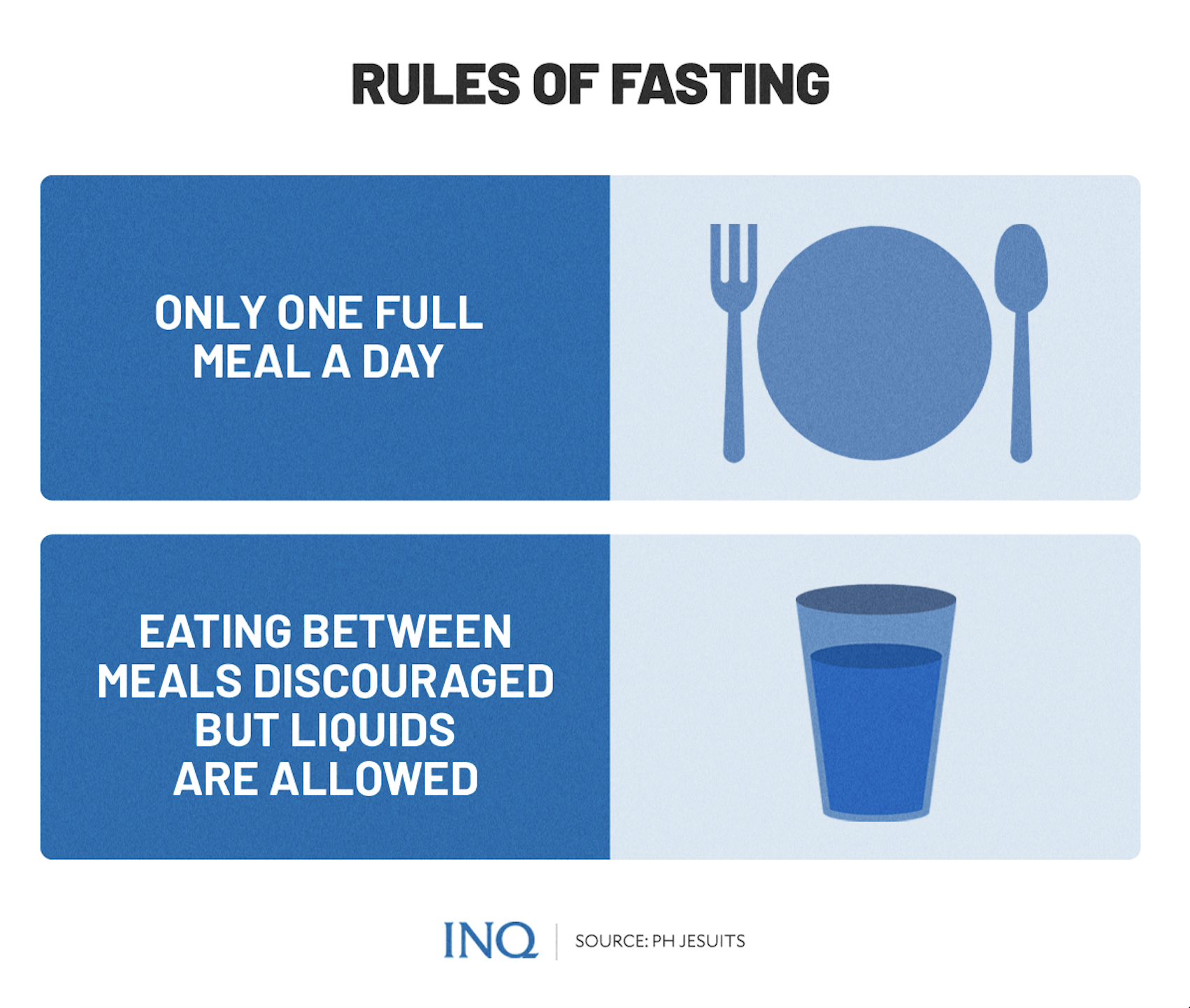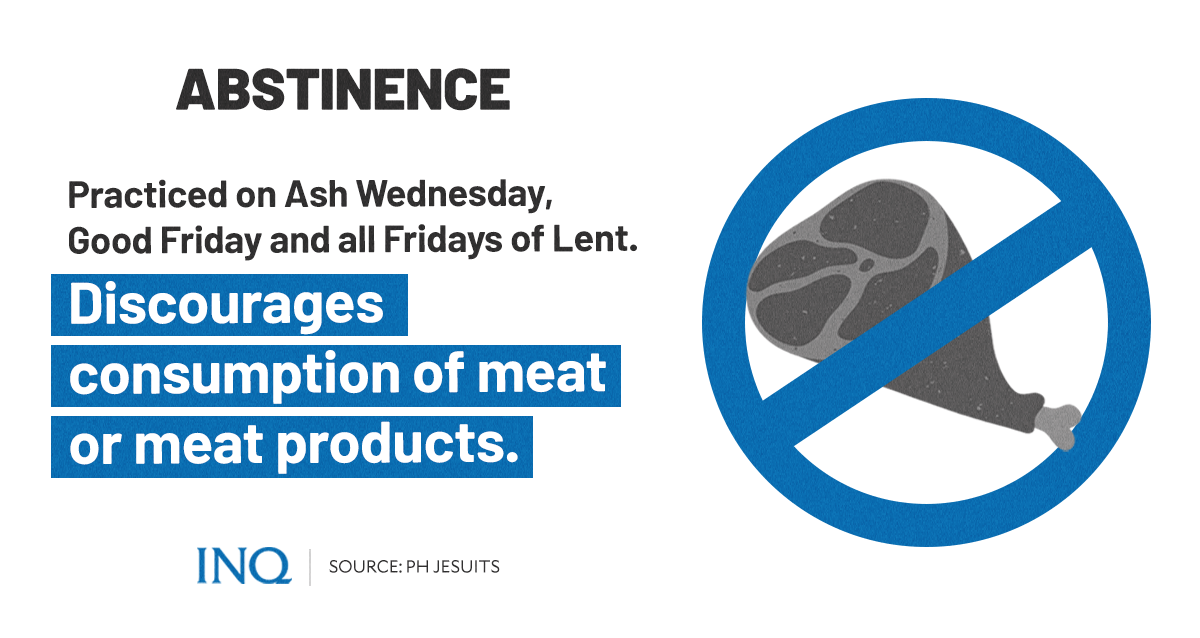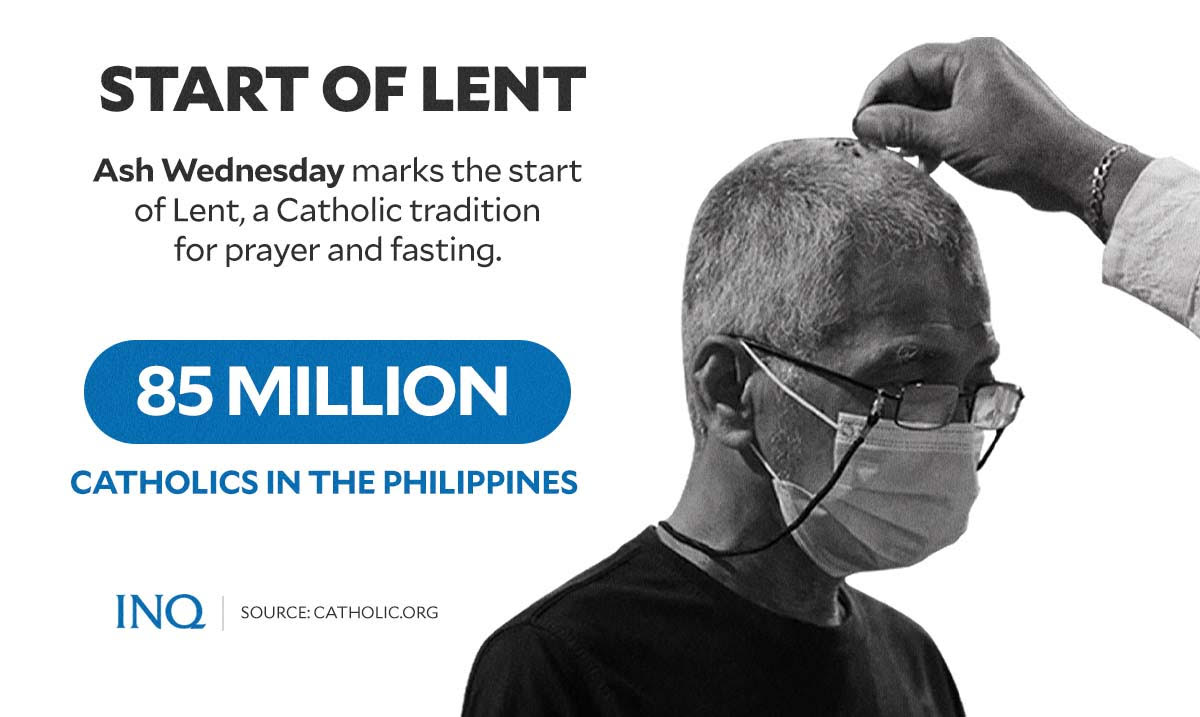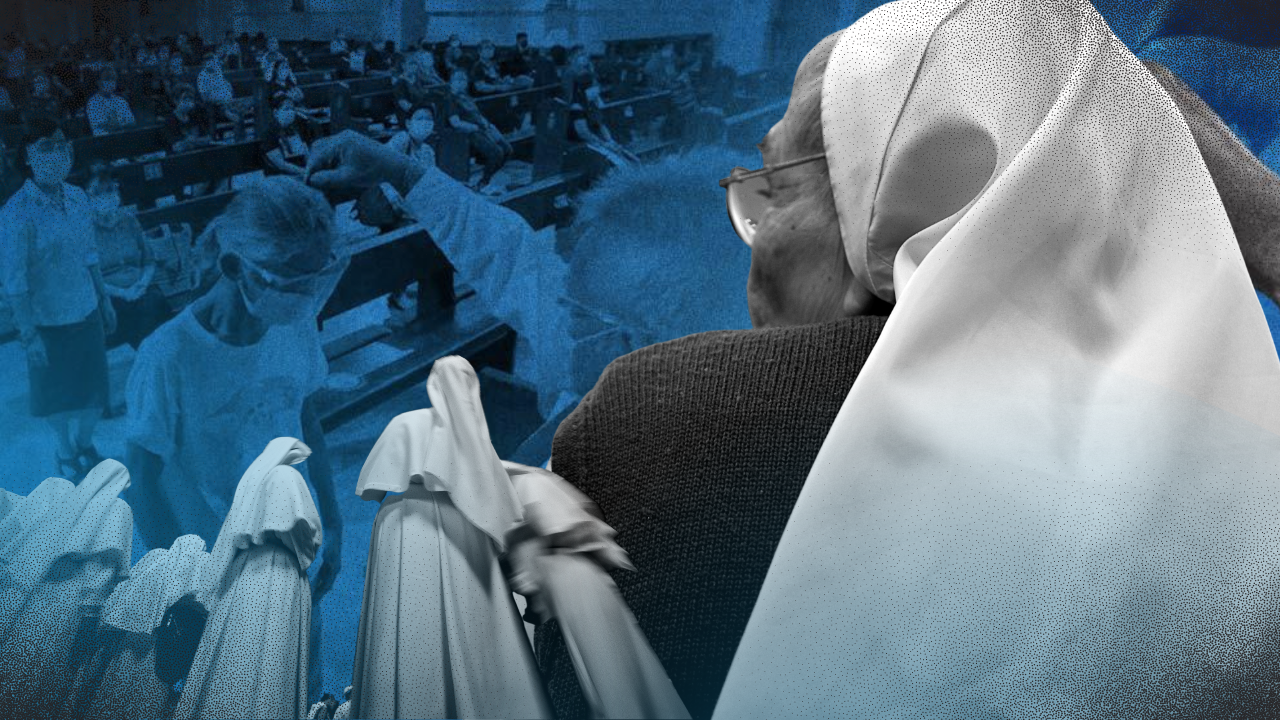40 days of Lent: What it’s like inside a monastery, convent
MANILA, Philippines—The 40-day season of Lent started on Wednesday (Feb. 22) as Catholics all over the world flocked to churches to have their foreheads marked with ash crosses, which is a sign of repentance.
As explained by the United States Conference of Catholic Bishops, the season is a chance to “seek the Lord in prayer by reading Sacred Scripture; serve by giving alms; and practice self-control through fasting.”
Here in the Philippines, which is considered as the stronghold of Catholicism in Asia with 85 million believers, Lent has always been celebrated with reverence and sacrifices, especially fasting and abstinence.
- Fasting
The Catholic News Agency (CNA) said fasting is the “act of doing with less.” Individuals who are 18 to 59 years old should fast on Ash Wednesday and Good Friday. This year, Good Friday is on April 7.
READ: Penance at Lent: What can people give up?
Individuals who are fasting may eat one complete meal, as well as two smaller meals, which are enough to maintain strength. But, together, the smaller meals should not exceed one complete meal.

GRAPHIC Ed Lustan
The sick are exempted from fasting. The CNA said pregnant women and even manual workers are excused from fasting, saying that the Church understands that some people are not able to commit to the Lenten fast.
- Abstinence
As the CNA explained, abstinence is the act of “doing without.” Canon 1250 to 1253 state that Catholics over the age of 14 are expected to abstain from eating meat on Ash Wednesday and on all the Fridays of Lent.
“Catholics are also encouraged to undertake some sort of personal penance or abstinence. Examples include giving up sweets, a favorite TV show or not listening to the radio in the car on the way to work.”
It said that “giving up these things isn’t some sort of endurance test, but these acts are done to draw the faithful closer to Christ,” stressing that a person should commit time to prayer.

GRAPHIC Ed Lustan
But what is Lent like within the walls of a monastery or convent, where religious women—active and contemplative—live? INQUIRER.net took a close look by asking them.
Praying endlessly
According to sisters at a Poor Clare Monastery, even though their everyday life within the cloister is already marked with almost endless prayers, this season of Lent, everything is intensified.
READ: Lenten season: The Filipino way
They said after dinner on Mondays, Wednesdays, and Fridays, they have what they call “disciple” in the monastic language: “We gather at our prayer room, we kneel down, we stretch our hands as in the form of a cross, and pray the Miserere.
Miserere, which is the Latin word for “have mercy,” is a psalm in which mercy is pleaded: “Have mercy on me, God, in your kindness. In your compassion blot out my offense. O wash me more and more from my guilt and cleanse me from my sin.”
Then after dinner on Thursdays, Thursdays, and Saturdays, the sisters, all clad in their “habit,” which is the distinctive set of religious clothing proper to a specific religious order, pray the Litany of Saints in an evening procession.
Prayer also marks the season of Lent at Carmelite monasteries, with some members having a 40-hour devotion on the first three days of Lent—Ash Wednesday, Thursday (Feb. 23), and Friday (Feb. 24).

GRAPHIC Ed Lustan
“We do Via Crucis and Via Matris around our cloister during our evening recreation,” they said, referring to the Stations of the Cross and Way of the Sorrowful Mother, which depicts the Seven Sorrows of Mary.
As explained by the Dominican Monastery of Our Lady of the Rosary, Lent is a “a time for prayer, a time for penance, a time for seeking the Lord more deeply, more wholeheartedly.”
Strict silence, solemn isolation
One of the members of the Carmelite monasteries that INQUIRER.net talked to said that basically, “the observance of silence and solitude remains generally the same throughout the year except during the Holy Week, especially the Paschal Triduum.”
It said on the days of the Paschal Triduum—Holy Thursday until Holy Saturday—the usual recreation time, which is 12 noon to 1 p.m. and 6:30 p.m. to 7:30 p.m., is not observed.
“There is ‘license to speak’ during Solemnities and Feast Days,” it said.
This is also the case at the Poor Clare Monastery, where “strict silence” is observed on all the days of Lent, which is a 40-day season of prayer, fasting, and almsgiving to prepare for the celebration of the Lord’s Resurrection at Easter.
“As you know, we don’t talk during meals but listen instead to a reading of a religious nature,” one of the members of the Carmelite monasteries said. This season of Lent, what they listen to while eating is only the Imitation of Christ.
Likewise, no visitors and messages are allowed in this season in preparation for Easter, as in Advent in preparation for Christmas.
“Messages, letters or gifts (except perishable ones) received during Lent remain at the Office of our Mother Prioress until Easter, when they are distributed to the particular recipients,” said the Carmelite member.
However, in emergency cases, the recipient can ask to receive it if the message for her needs an immediate reply.
They are also in “perpetual quarantine,” except when there is an urgent need to see a doctor or go out for “community errands.”
Intense fasting, abstinence
When it comes to fasting and abstinence, which is also observed by lay people, sisters inside the monastery, especially those of the Order of the Discalced Carmelites, fast throughout the 40-day season of Lent and the days of the Holy Week.
READ: FAQs: Fasting and abstinence during Lent
The exemption, they said, are Sundays, Feasts and Solemnities.
But in some monasteries, sisters fast from Sept. 14 of the previous year until Easter.
“During Lent, for our supper we eat only vegetables and rice or corn. Meat is strictly prohibited, even on Sundays and Solemnities.”
Then in one Carmelite monastery, “we have been used to just having pandesal and papaya for breakfast. Full meal at lunchtime and left overs for evening collation.”
The elderly and the sick, however, are exempted from the fast.
Missionary work
Sisters, meanwhile, outside a monastery, have a somewhat different way of observing Lent.
A religious from the Franciscan Sisters of the Immaculate Conception said while they also strictly observe fasting and abstinence, not only on all Fridays of Lent but all Fridays of the year, they engage themselves in active interaction with the people, especially the poor.
“We teach students the significance of the season, especially on Ash Wednesday,” she said.
“Then on the days of the Holy Week, we celebrate most especially Easter, where we prepare people near our community for the Sacrament of Baptism.”
